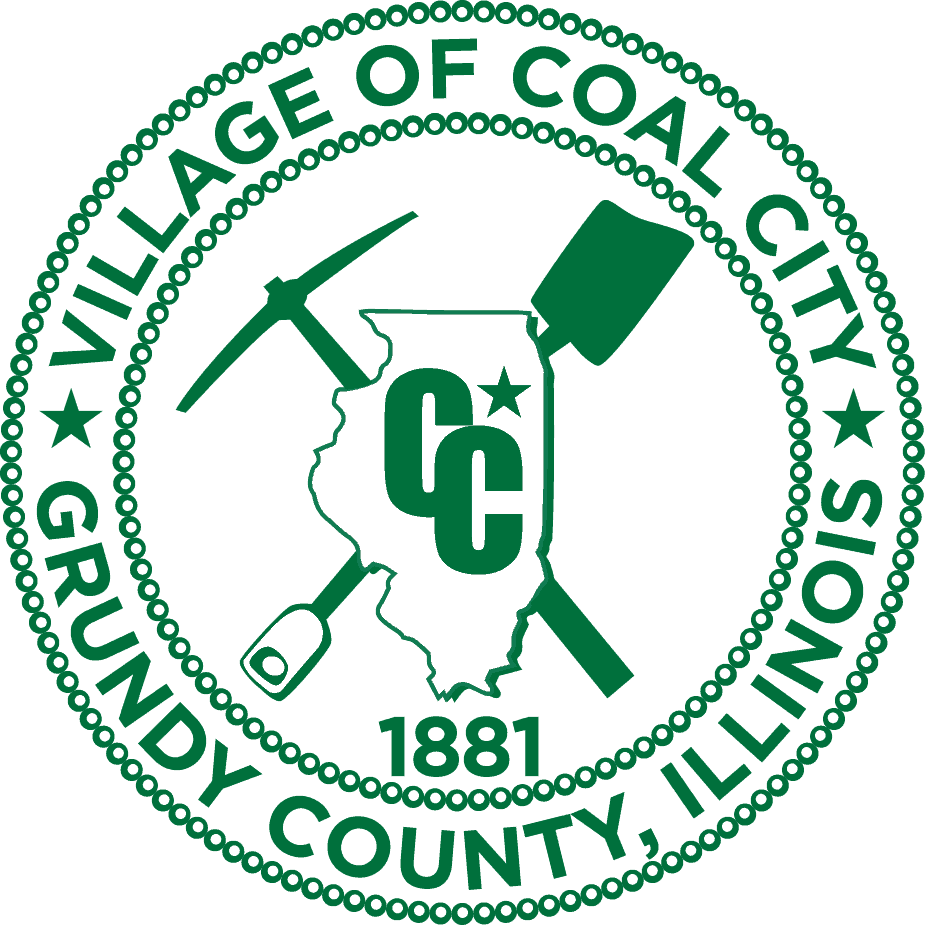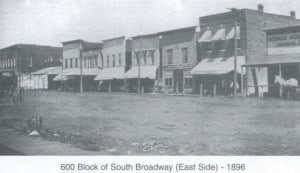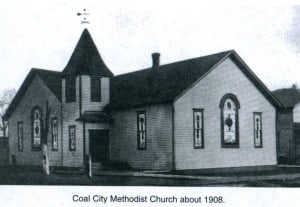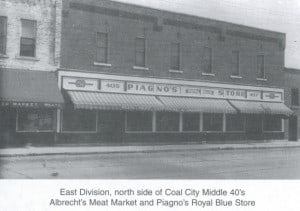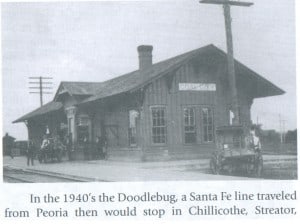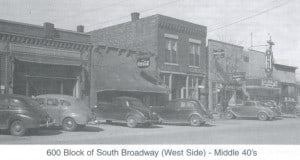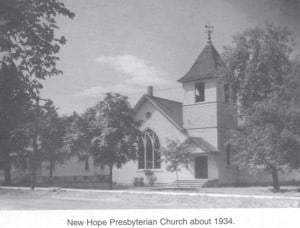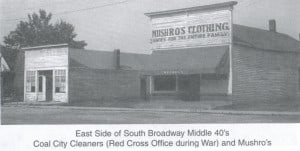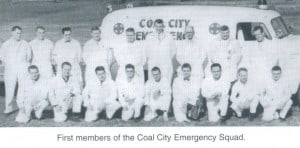
Welcome,
It is my great pleasure to welcome you to the Village of Coal City website. On behalf of myself, the village board, village administrator and the entire village staff, we hope you will enjoy this site and learn all about our great village.
Contact information is available throughout this site for various Village departments and elected officials. I invite you to contact any of us as needs arise.
It’s my honor to serve the Village of Coal City and its residents as their Mayor.
Sincerely,
David A. Spesia
Village of Coal City – Mayor
Welcome
Newcomers
Before the Village’s incorporation the history of Coal City has always been centered upon the resource coal. Coal City was one of many villages in the area that received its start from the mines utilized to mine coal for local blacksmiths and farmers who added the natural resource into the ears of corn that were burnt in order to create heat and energy. The area was settled beginning in the mid 1800s along with local neighbors South Wilmington, Braidwood, Godley, Carbon Hill, and Diamond.
 Consisting of sunken mines 3 and 4, a population of 900 and two buildings – the Coalfield Hotel and Charles Fisher’s Store, the Village incorporated on August 17, 1881. the population of the Village would fluctuate depending upon the success of the local mines. Beginning in the 1920′s and completed within the next decade the Opera House joined the Village’s downtown facades along Broadway. In the 1940′s residents of Coal City along with Streator and Mazon enjoyed hopping on the “Doodlebug” each day, which was a passenger train that would pick up riders and drop them off in Joliet each day from the BNSF station still located at the end of Church Street.
Consisting of sunken mines 3 and 4, a population of 900 and two buildings – the Coalfield Hotel and Charles Fisher’s Store, the Village incorporated on August 17, 1881. the population of the Village would fluctuate depending upon the success of the local mines. Beginning in the 1920′s and completed within the next decade the Opera House joined the Village’s downtown facades along Broadway. In the 1940′s residents of Coal City along with Streator and Mazon enjoyed hopping on the “Doodlebug” each day, which was a passenger train that would pick up riders and drop them off in Joliet each day from the BNSF station still located at the end of Church Street.
Currently estimated just over 5,000 residents, the Village of Coal City continues to be a place to learn, live, play, grow, and enjoy. A lot of residents within the area have a connection to other relatives who have known of the area for generations. Residents in the newer subdivisions such as Richards Crossing, and Spring Meadows have discovered a community that enjoys low property taxes while providing an award-winning education exceeding state averages in ISAT scores and has traditionally rewarded the community in athletics with performances that include state champions. The entire community along with Diamond, Carbon Hill, and Goose Lake send its children to one community unit school district that includes the Elementary School, Intermediate School, Middle School, High School, and the Early Childhood Learning Center.
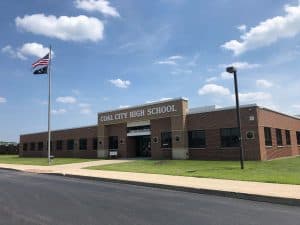 The continuing increase in population has found the Village to be very livable. Located just south of I-80 along the I-55 Corridor, Coal City is conveniently located at the doorstep of the western suburbs. This allows residents to enjoy the shopping of regional shops and malls in Bolingbrook and Oakbrook, the cultural interests of downtown Chicago including its museums, sports, and performances, and the rest and relaxation of small town living all available within one day’s activities.
The continuing increase in population has found the Village to be very livable. Located just south of I-80 along the I-55 Corridor, Coal City is conveniently located at the doorstep of the western suburbs. This allows residents to enjoy the shopping of regional shops and malls in Bolingbrook and Oakbrook, the cultural interests of downtown Chicago including its museums, sports, and performances, and the rest and relaxation of small town living all available within one day’s activities.
 Playing has been at the heart of this community since its onset. Many of the residents enjoy camping, fishing, and boating at the adjoining chain of lakes consisting of abandoned mines along the northern border of Coal City. These clubs include the Coal City Area Club, Miners Club, and Ceico Club. Each has their own boards and rules for membership, but provide a wealth of recreational opportunities. If one does not want to join one of these clubs, Coal City is located within minutes of the Kankakee and Des Plaines rivers, which brings a wealth of additional recreational opportunities including horseback riding.
Playing has been at the heart of this community since its onset. Many of the residents enjoy camping, fishing, and boating at the adjoining chain of lakes consisting of abandoned mines along the northern border of Coal City. These clubs include the Coal City Area Club, Miners Club, and Ceico Club. Each has their own boards and rules for membership, but provide a wealth of recreational opportunities. If one does not want to join one of these clubs, Coal City is located within minutes of the Kankakee and Des Plaines rivers, which brings a wealth of additional recreational opportunities including horseback riding.
Because of these opportunities, growth has been inevitable. Grundy County has experienced an increase in housing starts and will be the next high growth areas after the density of Will and Kendall Counties increase. The Village has completed a Comprehensive Plan to carefully control the growth in the areas and ensure the Village enjoys the opportunities that come along such as commercial establishments, more manufacturing and professional opportunities, and restaurants. The truck traffic in the area is an indicator of the logistics and geographical advantage that Coal City carries over much of the nation. Along with the growth in these areas will come additional passive and active recreational areas for resident enjoyment.
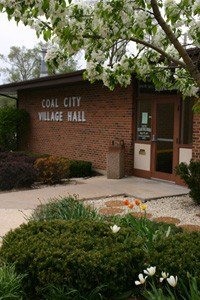 Lastly, residents have enjoyed the community since its incorporation. From the early Turners who continued the Bohemian traditions to the Lions Club Members, Coal City is a group of residents who enjoy their Village. Each year, the Village comes together in a number of events such as, Concerts in the park, Movies in the park, Farmers Market & Crafts, and even a car show. The Village and a host of non-profit organizations is comprised of the residents who invest their time and energy into making Coal City even more enjoyable and a place where people can continue to live, learn, play, and grow.
Lastly, residents have enjoyed the community since its incorporation. From the early Turners who continued the Bohemian traditions to the Lions Club Members, Coal City is a group of residents who enjoy their Village. Each year, the Village comes together in a number of events such as, Concerts in the park, Movies in the park, Farmers Market & Crafts, and even a car show. The Village and a host of non-profit organizations is comprised of the residents who invest their time and energy into making Coal City even more enjoyable and a place where people can continue to live, learn, play, and grow.
Comprehensive Plan
History
In 1820, Peter Lansett, a Canadian trader, was just one of the few that populated the soon to be Coal City area. Lansett collected coal from the ground and sold it to local blacksmiths and farmers, who formerly burned ears of corn for heat and energy. The more effective coal provided an economic boost for growth.
Mines started opening and towns developed around the mines. These towns included 1854 Gardner, 1858 Braceville, 1898 South Wilmington, 1875 Coal City, Clark City, Braidwood, Harrisonville, Sufferville, East Brooklyn, Central City, Godley, Richmond, Sandtown, Ramsey, Carbon Hill, Eileen, Torino, and Diamond. Miners lived within walking distance of the mines. In 1875 coal mine No. 3 was the first mine to sink, 1879 No. 4 sunk.
Coal City was incorporated in August 17, 1881 with a population of 900. The first Coal City Village Officials included President James Short; Village Clerk Henry Reese; Marshal Samuel Humter; Treasurer W.S. Kay; and Trustees John Brown, Montgomery Sharp, William Lindell, William Campbell, and William Homan.
Other small businesses started to develop during this time, including Coal City’s first two buildings, the Coalfield Hotel, and Charles Fisher’s Store. Coal mines owned company stores that supplied for the miners, these stores included shoes, groceries, dry goods, and meats. These purchases were then subtracted from the miners’ paychecks.
The population fluctuated as old mines closed and new mines opened. As miners moved ghost towns developed.
In 1883, the Diamond Mine disaster occurred. 74 men and boys were killed. The miners that were digging at the bottom of one of the shafts hit a water table and water started rushing into the shaft. Within minutes the mine had flooded, trapping these men underground.
Strip mine, operations began in 1928. Dirt piled outside mine openings, as mining moved more of the landscape was destroyed. Now, these mounds of earth are filled with water and wildlife, forming man made lakes.
The Opera House was opened during 1920′s and 1930′s. The building still stands today. The Coliseum was open during the late 1920′s and 1940′s. The Coliseum held Saturday night dances with the local Barney Faletti Orchestra. Unfortunately The Coliseum burned in 1970.
In the 1940′s the Doodlebug, a Santa Fe line traveled from Peoria then would stop in Chillicothe, Streator, Mazon, and then Coal City between 10:30 and 11:00. From there the Doodlebug would travel to Joliet, then up to Chicago.
November 6, 1984 Coal City and Eileen residents voted to annex Eileen into Coal City,
Coal City has grown and developed over the last 180 years. In 2000, it had a population of 3,900. Coal City’s community includes the following churches Assumption Catholic Church, Christian Life Assembly of Life, First Baptist Church, New Hope Presbyterian Church, United Methodist Church and Religious Education Center. Coal City also has several organizations including Athletic Boosters, Coal City Area Baseball and Softball, Coal City Boy Scouts Troop #466, Coal City Girl Scouts, Coal City Lions Club, GFWC IL Junioretts Club, GFWC Junior Womens Club, Grundy County Senior Citizens Council, Music Boosters, and 4-H Club.
Presidents & Mayors Of The
Village Of Coal City
| Mayor | Year |
| James Short | 1881 |
| Montgomery Sharp | 1882-1887 |
| Eli Stocker | 1888 |
| Percival Clark | 1889-1890 |
| Montgomery Sharp | 1891-1892 |
| Percival Clark | 1893-1895 |
| Andrew McKean | 1896 |
| Percival Clark | 1897 |
| John Baskerville | 1898 |
| Montgomery Sharp | 1899 |
| John Baskerville | 1900-1903 |
| Eli Stocker | 1903-1905 |
| Andrew McKean | 1905-1907 |
| William Somerville | 1907-1913 |
| Montgomery Sharp | 1913-1915 |
| Frank Albrecht | 1915-1919 |
| James Pavlis | 1919-1923 |
| Gabriel Longmuir | 1923-1925 |
| William Somerville | 1925-1931 |
| Edward Pierard | 1931-1935 |
| Thomas Jisa | 1935-1943 |
| William S. Brown | 1943-1946 |
| Joseph Phillips | 1946-1951 |
| James M. Kriz | 1951-1955 |
| Donald Koerner | 1955-1959 |
| Joseph Phillips | 1959-1963 |
| Donald Koerner | 1963-1967 |
| J. Leroy Brown | 1967-1971 |
| Joseph Phillips | 1971-1975 |
| Gerald Pierard | 1975-1979 |
| Marcus H. Marketti | 1979-1983 |
| Richard Roseland | 1983-1991 |
| Thomas McKinney | 1991-1999 |
| Gerald V. Pierard | 1999-2003 |
| Gerard V. Pierard | May 2003-July 2003 |
| Philip “Leo” Middleton Acting Pres./Mayor | July 2003-March 2004 |
| James Micetich Acting Pres./Mayor | April 2004-April 2005 |
| James Micetich | 2005-2007 |
| Neal E. Nelson | 2007-2015 |
| Terry Halliday | 2015-April 2023 |
| David A Spesia | May 2023-Present |
